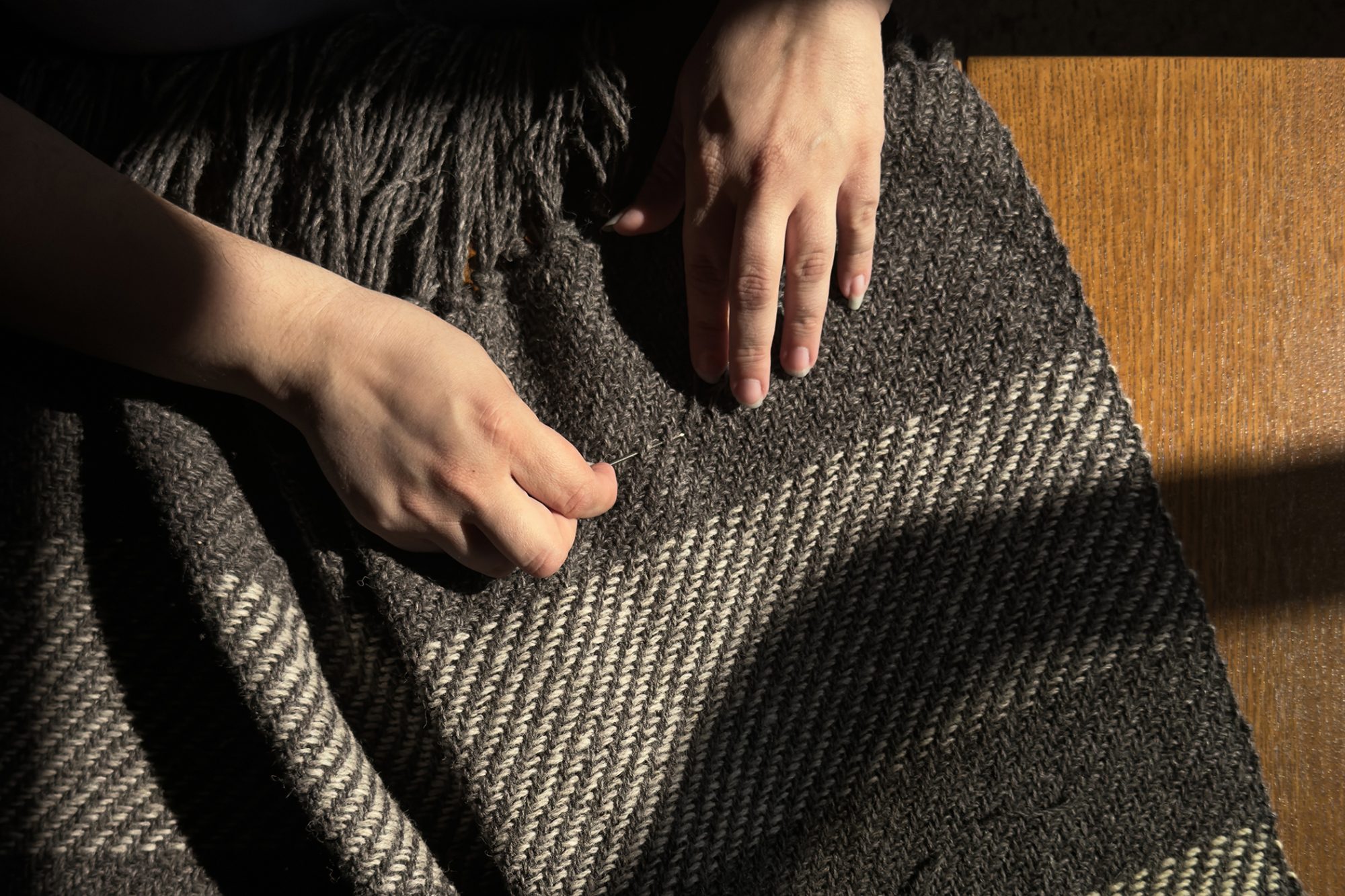When Shannon Nelson was growing up in Westlock, about 90 kilometres north of Edmonton, she became fascinated by tales of how her grandmother would weave flax into cloth. It wasn’t until 1996 when she moved to Grande Prairie and met a local weaving guild – a group of “old hippies,” as she calls them – that she learned the art form herself.
As she continued her weaving journey, she decided to pursue a Master Weaver Certificate from Olds College, where she met yarn developer Kalea Veremenko-Beckman, who shared her knowledge of sourcing wool and gathering textiles. In 2023, they founded Traceable Textiles, a weaving studio that primarily focuses on the production of wool blankets from fully traceable supplies. They were involved in every step of the creation of their products, from shearing the wool to harvesting plants for dye to weaving the yarn.
Even though Veremenko-Beckman decided to step away from the company, Nelson continues to share her artistic vision in every step of its development.
Since its creation, Traceable Textiles has grown a collection of products, which include blankets, scarves and yarn. While her company operates primarily online for their general collection, they have a physical office for workshops and process inquiries.
Her business does not only provide high-end luxury items, but it encourages her clients to return to the basics and reconnect with nature’s resources through her workshops. “This is my heritage,” she says about her work with Alberta wool and desire to create heirlooms that can last for generations.
Earlier this year, the federal government bought some of the company’s blankets to offer them as official gifts to the G7 leaders at the Kananaskis summit. For Nelson, the honour was both a nod to the company’s master craftsmanship and its sustainability mission.
Traceable Textiles’ collection is woven with 100 per cent earth-derived materials, which are processed within Nelson’s own weaving studio and dye house. Her whole practice is environmentally responsible, from how she obtains her material to the treatment of her collaborators. One of the driving forces of her work is to lower her carbon footprint and support her community, starting by working with farms that can provide her with the excess wool they would normally dispose of by burning. Nelson ensures that she is always finding collaborators that share the same guiding beliefs she has.
